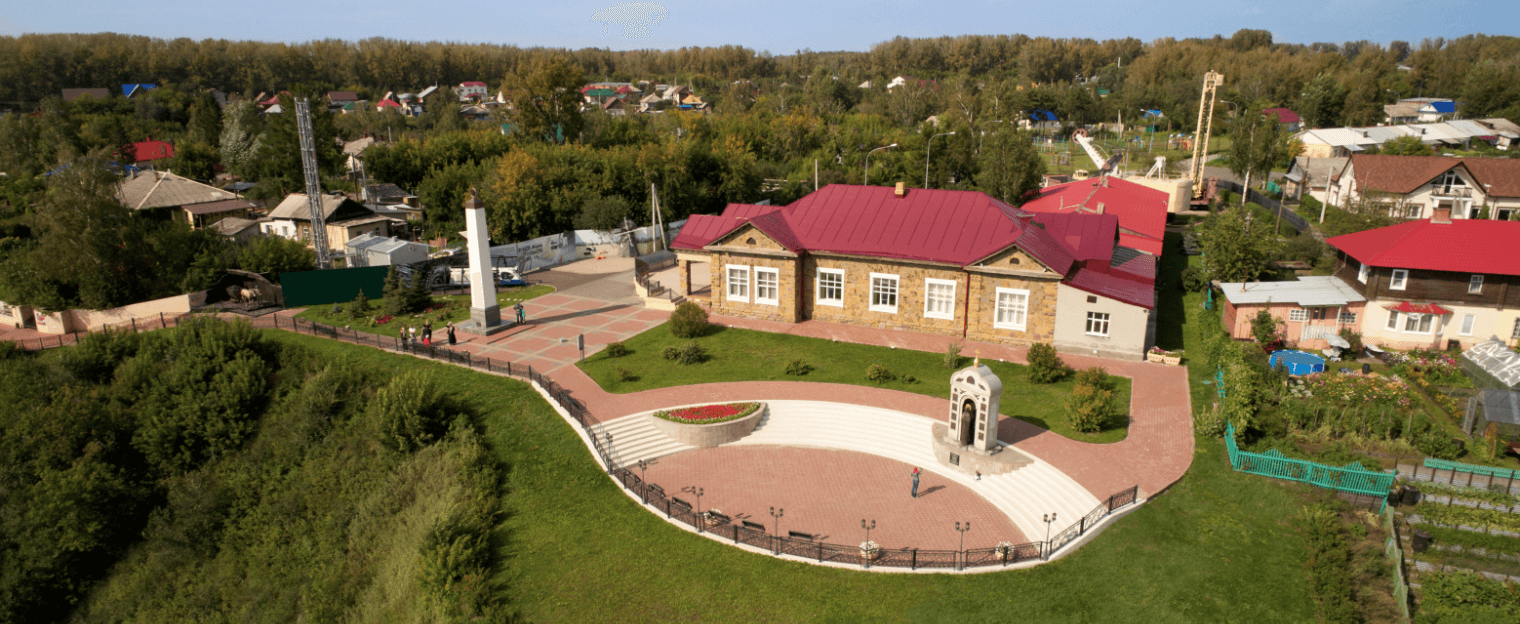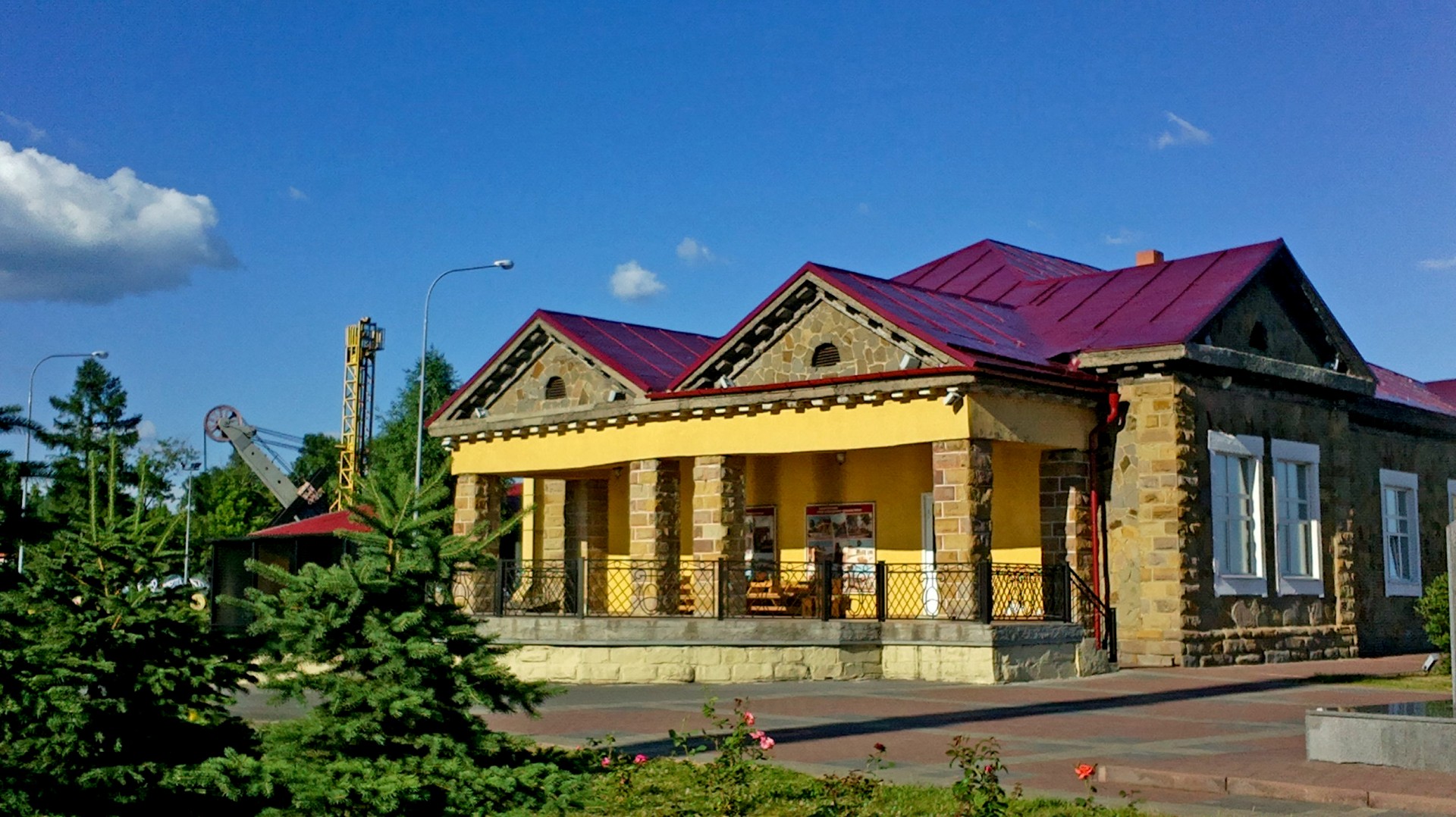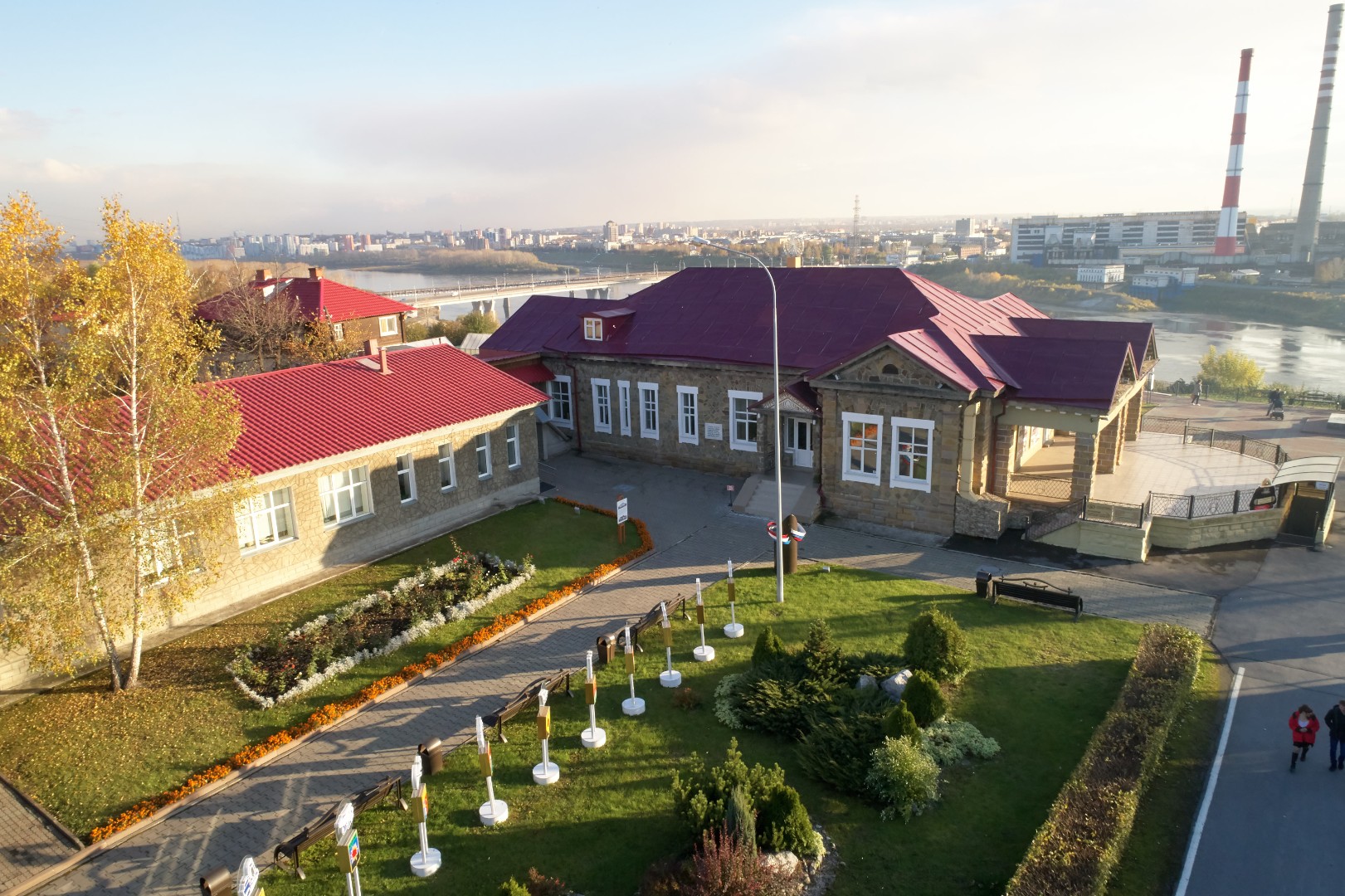Welcome to the Red Hill,
the historical center of Kemerovo!
The Red Hill museum was opened in 1991. This historical and architectural open-air museum was founded on the site where coal had been discovered in 1721. The museum owes its existence to the natural Burning Hill monument and numerous historical sites connected with the industrial development of Siberia.
Здание «Каменного дома». 1924 год
The museum takes its name from the Burning Hill, or the Red Hill, which is the oldest geological wonder in the neighborhood. This is where stone coal deposits were discovered in 1721, which later turned out to be the largest stone coal basin in the country. However, it wasn’t until 1907 that the Emperor ordered to set up the Kemerovo Mine, which would become the first city-forming enterprise.
The museum is headquartered in the Stone House that was built by the Joint-Stock Company of the Kuznetsk Stone Coal Collieries (Kopikuz) for the manager of the Kemerovo Mine. The company mined coal in the first decade of the XIX century. Kopikuz built the first industrial settlements and mines on the banks of the Tom’ River. It was Kopikuz that founded the first coking plant in Siberia. The buildings of that period are the oldest architectural monuments in the city.
In the 1920s Kemerovo got its name mentioned in the world history. In 1921, the Kemerovo Mine became the basis for the Autonomous Industrial Colony Kuzbass. Hundreds of foreign workers came to Siberia in 1921 following Lenin’s call “Proletarians of all countries, unite!” Workers, specialists, idealists, romantics, and adventurers of more than 30 nationalities arrived to Siberia to build the brave new world and restore Russian industry, which had been ruined by the Revolution and the Civil War. Thousands of Russian miners and workers employed by AIC Kuzbass dwelled in mud huts, so its director invited Johannes Van Loghem, a famous Dutch architect, to build comfortable row houses for workers and town-houses for engineers. Today, the so-called “sausage” houses are on the list of historical monuments.
The total territory of the museum occupies 55 ha. In addition to historical and natural monuments, it includes modern sculptures, such as The Great Martyr Varvara, The Horse Driver, and Memory to the Miners of Kuzbass by Ernest Neizvestny.


